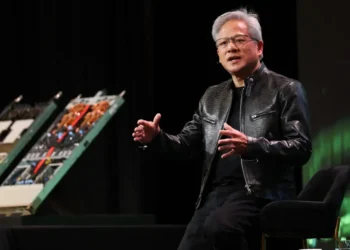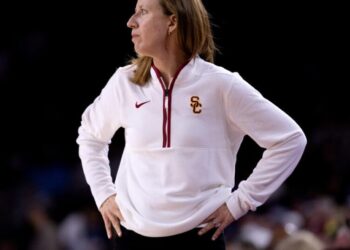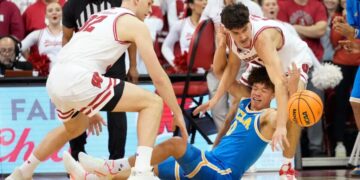Jensen Huang said he is ‘perfectly fine’ with the California billionaire wealth tax and breaks with other tech CEOs
Nvidia CEO Jensen Huang said he is "perfectly fine" with California's proposed billionaire wealth tax. Patrick T. Fallon / AFP...
Georgia sets special election for Marjorie Taylor Greene’s House seat
Georgia’s Gov. Brian Kemp (R) on Tuesday announced a special election to fill the House seat vacated by the resignation...
Ex-CHP captain who drunkenly exposed himself on flight, twice, avoids jail sentence
A former California Highway Patrol captain will not serve jail time after admitting to exposing himself and sexually touching flight...
Georgia Mega Millions player claims $983M jackpot — state’s largest lottery prize
Peachy start to the New Year. A mysterious Georgia lottery player has claimed the historic $983 million Mega Millions jackpot,...
Gwyneth Paltrow explains how she used to struggle when working with men
Gwyneth Paltrow says she worked with a coach to unlearn her fear of disappointing people. Dia Dipasupil/WireImageGwyneth Paltrow says she...
USC women can’t hold on to big lead and lose to Oregon
The shots had stopped falling. The tension had started rising. Fresh off its worst loss of the Lindsay Gottlieb era,...
Russia Sends Naval Vessel to Escort Oil Tanker U.S. Is Pursuing
Russia has dispatched at least one naval vessel to meet and escort an oil tanker that the U.S. military has...
Berkshire Hathaway’s new CEO has a much higher salary than Warren Buffett did
Greg Abel will make $25 million in cash in his new role. Kevin Dietsch/Getty ImagesBerkshire Hathaway disclosed that Greg Abel...
Daily Horoscope: January 7, 2026
Today carries a surprisingly grown-up tone. The Moon in Virgo forms a rare run of supportive trines, making emotions easier...
Ex-aide to Mass. Gov. Maura Healey accused of drug trafficking mistakenly paid $30K for unused vacation days
A former Massachusetts gubernatorial aide accused of sending eight kilos of cocaine to a state office building was paid more...














